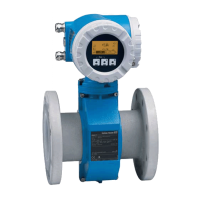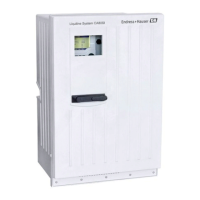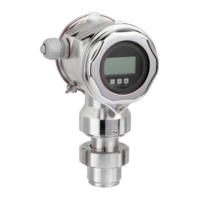OXY5500 Optical Oxygen Analyzer BA02195C
B
–16 Endress+Hauser
10. Tighten the tube nut on the probe tip (panel side). Refer to Figure
B–11.
11. Secure the cable gland cap with the adjustable wrench. Refer to
Figure B–10.
12. Close the analyzer enclosure cover and secure with clamps.
13. Perform a leak test on the analyzer. Refer to “Service” on page
B-19.
14. Calibrate the analyzer. Refer to “Calibrating the analyzer” on
page 4-35.
Correcting Error Codes
If a signal overflow error is received, follow the steps below to resolve the error.
Refer to Table 4–5 on page 4–44 for the error bit reference.
High signal strength: Low O
2
or no O
2
on OP-3, OP-6 or OP-9 probe
1. Decrease the LED intensity of the O
2
probe by single increments.
2. Refer to “Device settings screen” on page 4-26 for more
information on LED Intensity settings.
Low signal strength: High O
2
on OP-3, OP-6 or OP-9 probe
1. Increase the LED intensity of the O
2
probe by single increments.
2. Refer to “Device settings screen” on page 4-26 for more
information on LED Intensity settings.
Recommendations for Correct Measurement
Calibration of the sensor is recommended before each new application. As an
alternative, the calibration values of the last measurement can be used. If
temperature compensation is not used, ensure that the temperature of the
sample is known and is constant during measurement. With temperature
compensated measurements, the temperature sensor Pt100 (RTD probe)
should be positioned as close as possible to the oxygen sensor to avoid
temperature differences.
Do not overtighten the cable gland cap.

